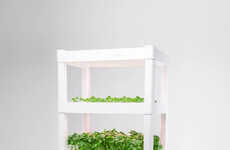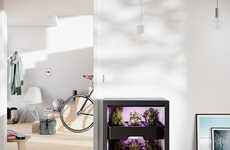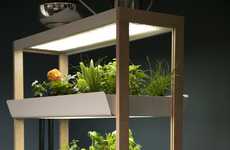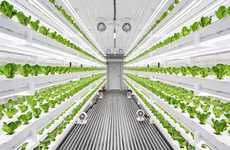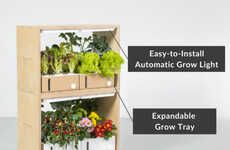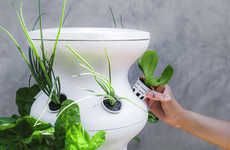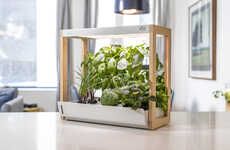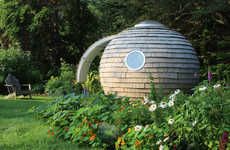
These Connected Greenhouse Create Rooftop Gardens in Urban Areas
Alyson Wyers — January 18, 2015 — Eco
References: cityblooms & springwise
City dwellers know finding green space can be a challenge, which is why so many urbanites turn to cultivating rooftop gardens. These smart modular greenhouses from Cityblooms sit at the cross-section between urban microfarming and commercial agriculture.
As the world's population grows -- it's expected to reach 9 billion by 2050 -- food security is increasingly becoming a concern. This kind of lightweight gardening solution could help alleviate issues.
The tiny farms only weigh about 16 pounds for every square foot. This means city folk can install rooftop gardens without having to worry about potential roofing support problems. You can combine any of the hydroponic microfarm units and track their growth too. This gives gardeners more control over aspects like irrigation, humidity and plant nutrition, especially compared to community gardens.
As the world's population grows -- it's expected to reach 9 billion by 2050 -- food security is increasingly becoming a concern. This kind of lightweight gardening solution could help alleviate issues.
The tiny farms only weigh about 16 pounds for every square foot. This means city folk can install rooftop gardens without having to worry about potential roofing support problems. You can combine any of the hydroponic microfarm units and track their growth too. This gives gardeners more control over aspects like irrigation, humidity and plant nutrition, especially compared to community gardens.
Trend Themes
1. Modular Microfarms - Disruptive innovation opportunity: Developing scalable modular microfarms for urban areas to address food security concerns and enable rooftop gardening.
2. Connected Greenhouses - Disruptive innovation opportunity: Creating smart greenhouses that allow urban dwellers to monitor and control plant growth, irrigation, and nutrition for rooftop gardens.
3. Urban Microfarming - Disruptive innovation opportunity: Designing lightweight and space-efficient urban microfarming solutions to enable city residents to cultivate their own food in limited spaces.
Industry Implications
1. Agriculture - Disruptive innovation opportunity: Integrating technology and modular designs into traditional agriculture to enable sustainable and efficient urban farming practices.
2. Smart Farming - Disruptive innovation opportunity: Developing connected greenhouse systems that leverage IoT and data analytics to optimize crop production and reduce resource consumption.
3. Construction - Disruptive innovation opportunity: Designing rooftop structures that can support modular microfarms and integrating them into urban architecture to promote sustainable food production.
6.8
Score
Popularity
Activity
Freshness



